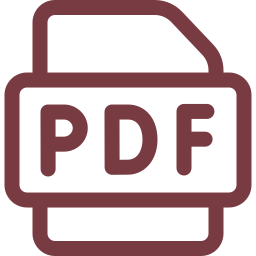How to Draft an Employee Handbook
Introduction
An Employee Handbook should be tailored to the individual needs of the employer and the employer’s management style. It is to be used as a guideline and should never be interpreted as a form of an Employment Contract. These guidelines are utilized by both the employee and employer as a means to ensure consistency in matters of office policy.
Your initial steps should include:
1. Determining the Purpose of the Handbook
- Recruitment information
- Referral source for employees, i.e., history of the firm, etc.
- Standardization of policies and procedures to ensure consistent application of work rules
- Legal compliance with non-discriminatory laws and Worker’s Compensation and OSHA
- Brief guidelines providing information to employees while preserving flexibility
2. Instructional Information that Everyone can Follow:
- Be careful to cover all employees equally
- Be clear and concise in developing and implementing office policies that you and/or your firm’s management can follow
- Clearly define “full-time”, “part-time” and “temporary” employees and what benefits may or may not apply to each. Refrain from using the term “permanent employee”.
- Remember that Texas is an employment-at-will state, unless a written Employment Contract is entered into.
- Do not attempt to make policies so comprehensive that they can be assumed to cover every conceivable situation. Leave flexibility in your policies and procedures.
- Use accent words such as “may”, “can” and “generally”, rather than words such as “will” or “must.”
Topics Generally Contained In An Employee Handbook
Introduction
Welcome, Organization of Firm, Mission Statement
Employment Policies
Equal Employment Opportunities, Sexual Harassment & Complaint Procedures, Anti-Nepotism Policy, Orientation Program, Transfer/Promotions Policy, Privacy Rights, Personnel Records, Emergency and Safety Procedures.
Compensation Policies
Classification of Employment Levels, Provisionary Status, Work Hours/Office Hours, Part-Time and Temporary Employees, Payroll Procedures, (1) Overtime Procedures, (2) Bonus Plans, (3) Request for Driving Record and Employee Performance Evaluations.
Time-Off Benefits
Vacation, Holidays, Personal Time, Sick Leave, Death/Illness in Family, Jury Duty, Voting/Election Rights, Military Leave
Group Health & Related Benefits
Employee Benefit Programs, Health Insurance, Basic Life Insurance, Disability Plans, Workers Compensation or Non-Subscriber Status, Dental Insurance, and Retirement Plan.
Employee Conduct
Personal appearance, Absenteeism and Tardiness, Outside Employment, Americans With Disabilities Act, Solicitation, Employment References, Drug-Free Work Place and (4) Discipline/Termination of Employment.
- Employers must pay all hourly and non-exempt employees overtime for all hours in excess of 40 hours per week. It is important to state if advanced approval of overtime is needed.
- Bonus Plans – discuss if they are discretionary or non-discretionary
- Waiver to Obtain a Driving Record of your employee if they are to do any driving during firm hours and/or for firm business.
- Discipline/Termination of Employment – be certain to include a statement that this is not intended to be all inclusive, but that these are some of the reasons for immediate discipline and/or termination.
Common Pitfalls And How to Avoid Them
Implementation of Policies. Policies that are implemented must be consistently followed by Management.
Termination Provisions should avoid phraseology such as “for just cause” or “good cause” — these types of phrases lend credibility to the fact that an employee cannot be terminated in the absence of “cause” — remember Texas is an employment at-will state.
Disciplinary Procedures. Include a statement that gives you the right to terminate an employee immediately for certain conduct such as theft, being under the influence of non-prescription drugs, or alcohol at work. Be sure to include language indicating that the list of termination offenses is not all inclusive.
Probationary Period. Make it understood that even after an employee has completed their probationary period this does not create a contract or a guarantee of employment for any specific duration.
Employee Benefits. Employers need to be aware that the Employee Retirement Income Security Act (ERISA) requires employers to provide employees a separate Summary Plan Description. This handbook summarizes all benefits offered by the firm.
Conclusion
Include a General Disclaimer
Example:
This is not intended to be an all-inclusive list of policies and procedures of this firm, however, it is a guide to help answer the most commonly asked questions and sets forth the guidelines under which this firm operates. This firm reserves the right to change any terms or provisions at any time. Employment with this firm is “at will”. This means that either you (the employee) or the firm may terminate the employment relationship at any time, for any reason.
And
Include an Acknowledgement Page for Both Employee and Management.
Example:
I, the undersigned Employee, have read and understand the policies contained in this Employee Handbook. I further understand that it is only a general guide and that the provisions and/or terms may be changed and/or terminated at any time during my employment with this Firm. I expressly understand that this Employee Handbook does not create nor constitutes a Contract of Employment; furthermore, it does not change my status as an Employee “at will.”
______________________________ _________________________________
Employee Signature Management Signature
Resources by Topic
The information provided and the opinions expressed in this monograph are solely those of the author. Neither the State Bar of Texas nor the author are rendering legal, accounting or professional advice and assume no liability in connection with the suggestions, opinions, or products mentioned.

 LPM Help Center
LPM Help Center